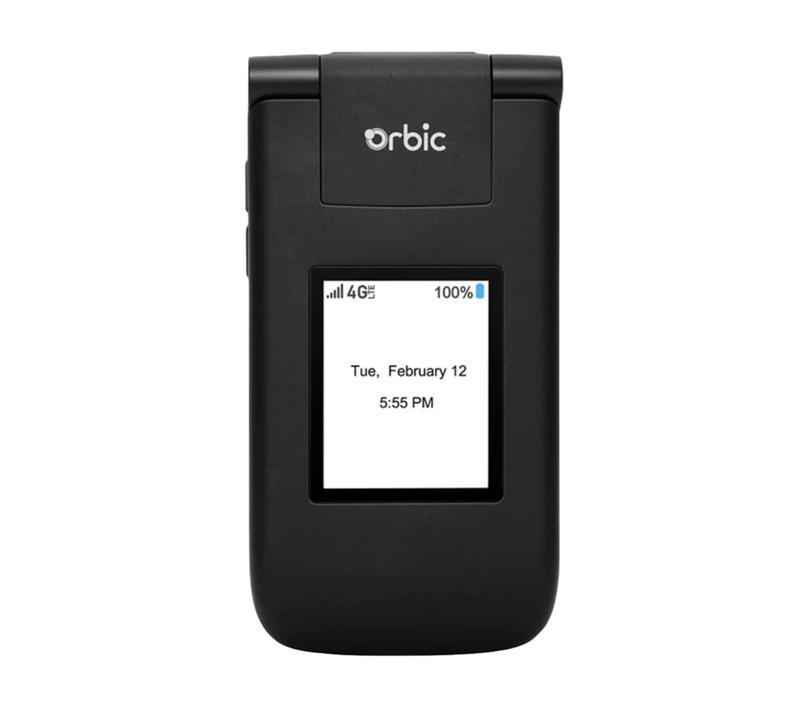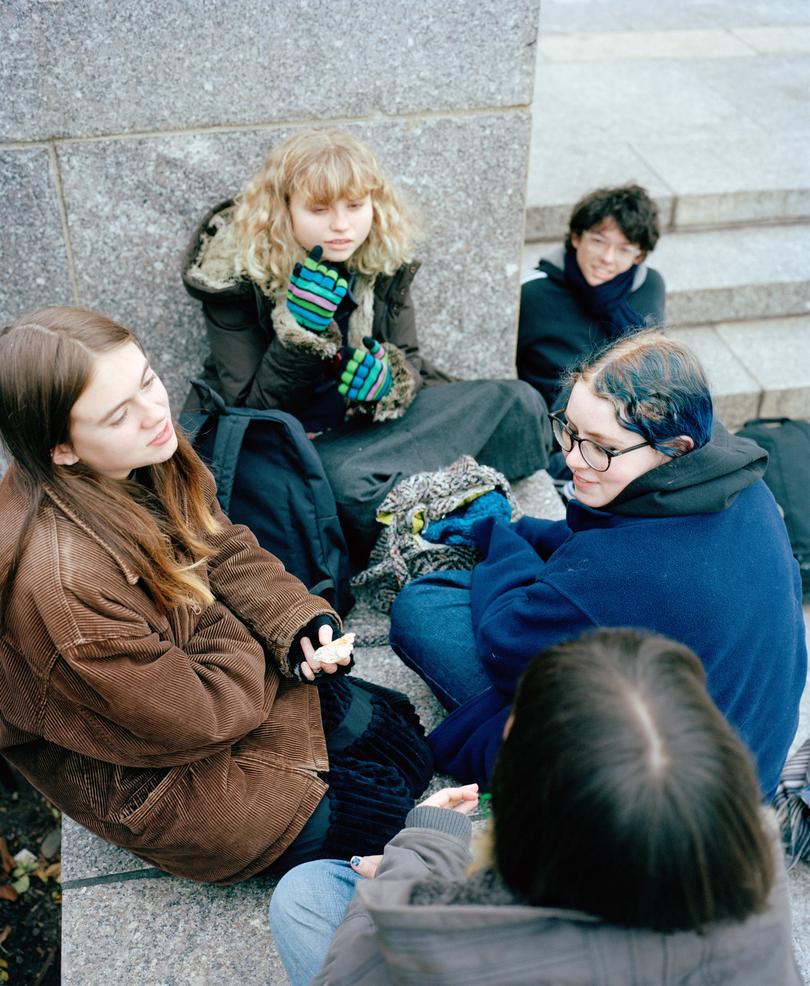The New York Times: Why I turned to an old flip phone model to cut my screen time

This time of year, everyone asks what you like least about your life, but they phrase it as, “What’s your New Year’s resolution?”
My biggest regret of 2023 was my relationship to my smartphone, or my “tech appendage” as I’ve named it in my iPhone settings. My Apple Screen Time reports regularly clocked in at more than five hours a day.
Sure, some (much?) of that time was gainfully spent on activities that enrich my life or are unavoidable: work, family text threads, reading the news and keeping up with far-flung friends. But I reached for the device more than 100 times each day according to my report. And that grasping was increasingly accompanied by the kind of queasy regret that I associate with unhealthy behavior — that feeling I get after I drink too many glasses of wine, finish the whole bag of sour gummies or stay at the poker table when I’m on tilt.
Sign up to The Nightly's newsletters.
Get the first look at the digital newspaper, curated daily stories and breaking headlines delivered to your inbox.
By continuing you agree to our Terms and Privacy Policy.So in December, I made a radical change. I ditched my $1,300 iPhone 15 for a $108 Orbic Journey — a flip phone. It makes phone calls and texts and that was about it. It didn’t even have Snake on it.
It may seem strange to go retro in the age of ChatGPT, artificial intelligence-powered personal stylists and Neuralink brain implants. But with advanced technology poised to embed itself more deeply in my life (not my brain, though — please, never my actual brain), it seemed a perfect time to correct course with the existing tech that already felt out of my control.
Finding a ‘Dumbphone’
Making the switch was neither easy nor fast. The decision to “upgrade” to the Journey was apparently so preposterous that my carrier wouldn’t allow me to do it over the phone. I had to go to the store.
My 7-year-old stared in disbelief at the technological relic on display beside a collection of sleeker devices with touch screens. “That’s the phone you want? Are you joking?” she asked, rubbing her fingers over the Orbic Journey’s plastic keys.
The Journey has been panned by “dumbphone” connoisseurs. Not only is the battery life laughably short, it loses service when it’s on the move and has to be rebooted to reconnect. But it was the only so-called minimalist phone that my low-budget carrier supported.
There are superior options with reliable service available, and some even have mapping capabilities, music players and voice to text. The minimalist market has expanded in recent years, said Jose Briones, who created a “dumbphone finder” to help people choose from 98 models he has tried. (The Journey did not make the list.)

“People are digitally fatigued after the pandemic, after having to be online all the time,” said Briones, 28, who is still online enough to manage the Dumbphone subreddit and regularly post reviews of the devices on YouTube.
“I have found personally that the more boring the screen,” Briones said, “the easier it is to not be addicted to it.”
The Journey’s level of boringness was reassuring. Its main screen was tiny and dull; a smaller one on the outside displayed the time. When I got it home, I had trouble switching my service from the iPhone’s eSIM to the flip phone’s physical one. But soon, I was slowly typing out texts and emoticons using just 9 keys.
Texting anything longer than two sentences involved an excruciating amount of button pushing, so I started to call people instead. This was a problem because most people don’t want their phone to function as a phone.
When friends and family did pick up the phone, the conversations went far deeper than a text exchange would have. I had a heart-to-heart with a college friend one morning while walking my dog. She sent me a lengthy text afterward thanking me for some advice I had given her.
Flip Phone February?
Colleagues, friends, and loved ones who saw the device in my hand or noticed my text bubbles go green were equal parts skeptical and envious. “I wish I could do that” was a refrain I heard so often that I now think Dry January should be followed by Flip Phone February.
My black clamshell of a phone had the effect of a clerical collar, inducing people to confess their screen time sins to me. They hated that they looked at their phone so much around their children, that they watched TikTok at night instead of sleeping, that they looked at it while they were driving, that they started and ended their days with it.
But being deprived of the smartphone and its apps was sometimes highly inconvenient:
- I received a robot vacuum for Christmas … which could be set up only with an iPhone app.
- Midway through the month, I got an “alert” email from my bank: I’d overdrawn my checking account. I usually monitor my balance on the bank’s smartphone app, and move money from a high-yield savings account when it’s getting low. I’d forgotten about this, and had also been procrastinating on a trip to the bank to deposit a paper check — something I usually do by snapping a photo of it in the mobile app. Whoops!
- Many of my online accounts, including The New York Times one that allows me to sign into its content management system to draft stories, require two-factor authentication via a smartphone app. Since you are reading this story, I clearly cheated on this one by turning on my smartphone and using it on Wi-Fi to get the code I needed.
Despite these challenges, I survived, even thrived during the month. It was a relief to unplug my brain from the internet on a regular basis and for hours at a time. I read four books. I did a very cool, “magic” jigsaw puzzle. I went on long runs with my husband, during which we talked, rather than retreating into separate audio universes with AirPods. I felt that I had more time, and more control over what to do with it.
“Our health is competing with many of these services and companies that are vying for our time and our energy and our attention,” said Matthew Buman, a professor of movement sciences at Arizona State University.
Buman just completed a study funded by the National Institutes of Health into strategies to get people off screens and moving more, from motivational messages when they’ve been on the screen too long (“You’re close to your goal. You can do this!”) to awarding screen time based on hitting exercise goals.
He hopes that smartphone giants Apple and Google will make their screen time and well-being apps more effective by incorporating strategies that are proven to work. Buman’s program helped reduce the screen time of the 110 people in the two-year study, but he’s still assessing the findings to figure out which strategies were the most effective.
I told Buman about my own strategy — the flip phone. He said it probably made my mind feel more free and feel as if I had more time (both true), but that “in our society, it’s hard to sustain that in the long term.”
Breaking Bad Habits
I asked my 7-year-old what she thought of this “flip phone mom.”
“I like it better; you don’t look at your phone as much and you spend more time playing with me,” she said, making me feel both wonderful and terrible.
My social circle shrank for the month. I didn’t send a blast of “Happy New Year” texts (too hard via flip) and I disappeared from Instagram (causing one friend to send me an “are you OK?” message). You might think I would have FOMO, but I didn’t — maybe because all the interactions I was having felt richer.
As much as I loved my flip phone life and the mental reset it provided, I think I might get fired if I failed to respond in a timely manner to Slack messages and emails as often as I did in the month. (Editor’s note: This is unfounded projection, clearly masking a deep and uncontrollable desire to return to the smartphone.) So I do plan to return to my iPhone in 2024, but in grayscale and with more mindfulness about how I use it.

With that in mind, I created a designated spot for my phone at home — a little coffee table with a plant and a charger. I’ll keep it there when I’m not working, so that it’s not on my person all the time and I can’t thoughtlessly paw at it. That’s where it will live at night, too, so it’s not by my bedside disrupting my sleep. I hope the sense of well-being this brings suffices as an enforcement mechanism.
Some tech critics, however, are skeptical that individual strategies are the way forward.
“More and more people are starting to see that these platforms, these products are intentionally designed to be addictive,” said Camille Carlton, a policy manager at the Center for Humane Technology, a nonprofit in California founded by former tech employees to raise awareness about the negative effects of the kinds of products they worked on.
Carlton compared smartphones and social media apps to junk food and tobacco, and suggested that lawmakers should regulate the design of these products to protect our health.
For now, though, it’s up to us.
This article originally appeared in The New York Times.
© 2023 The New York Times Company
Originally published on The New York Times
